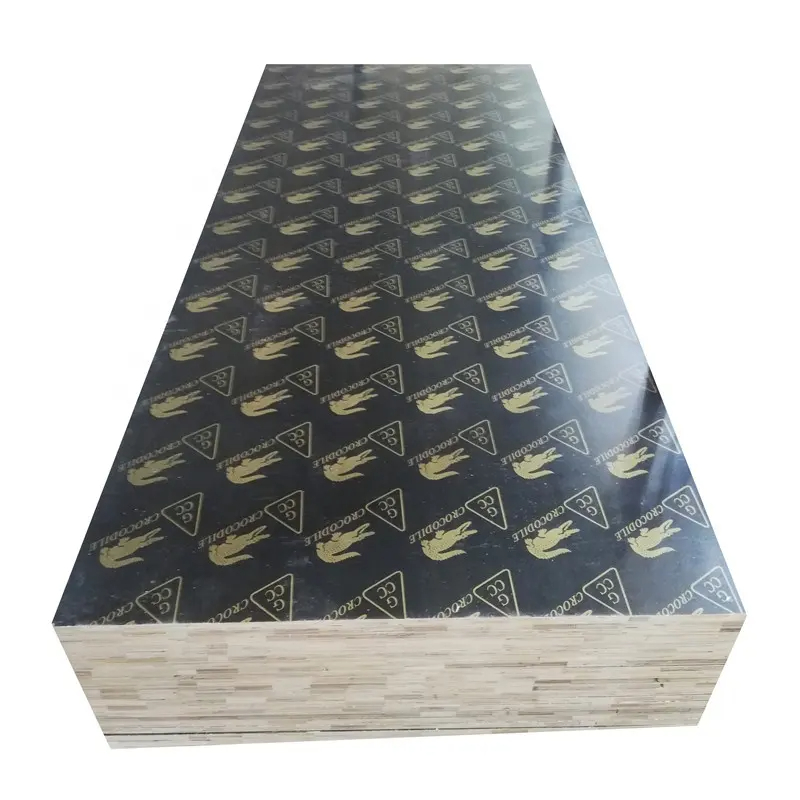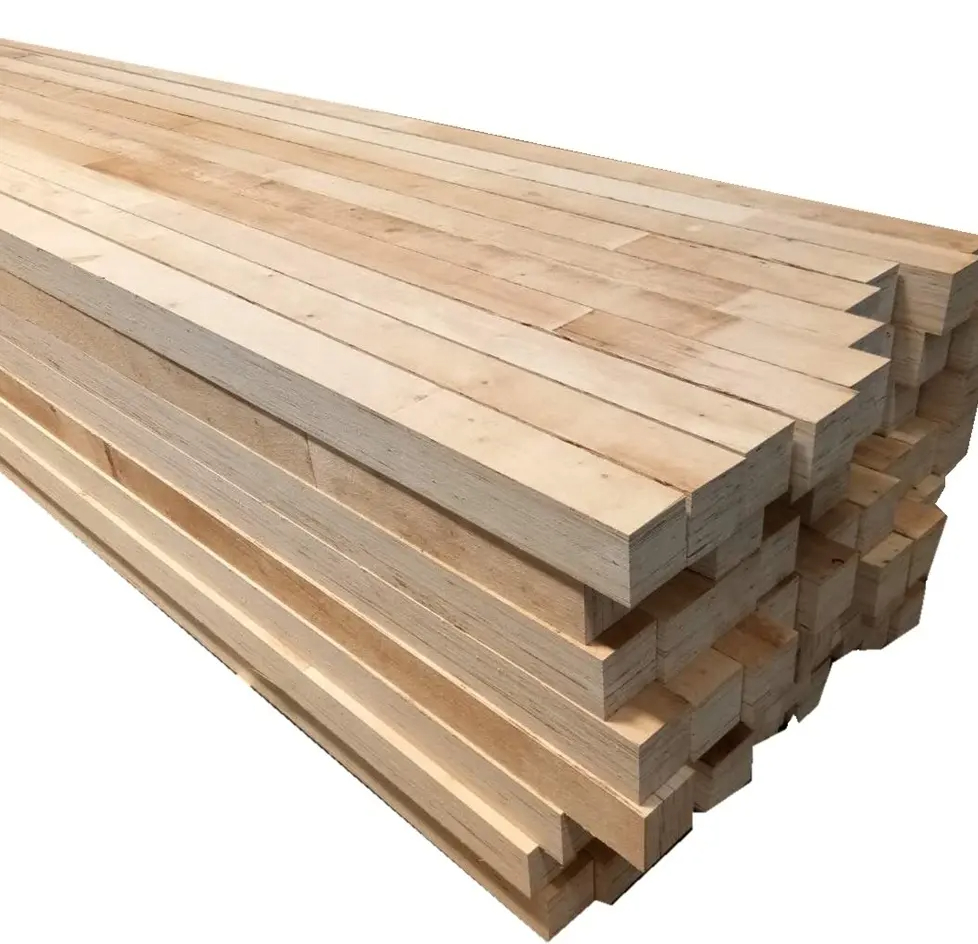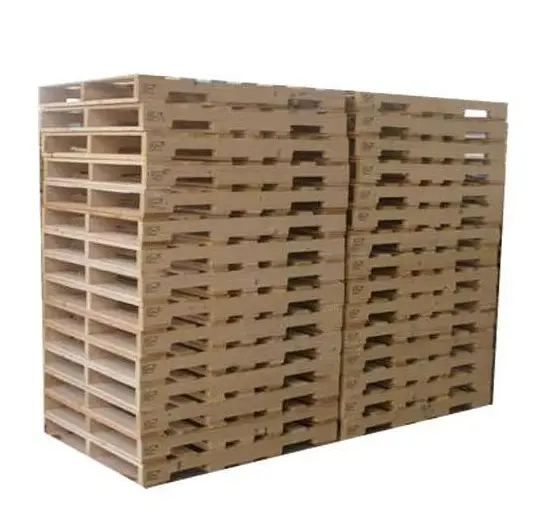- Veneer plywood is a cornerstone of the woodworking and construction industry, playing a pivotal role in the production of a wide array of wooden products. Its importance stems from the unique blend of aesthetic beauty and structural integrity it offers. The veneer plywood's primary function is to combine the visually appealing characteristics of natural wood veneer with the robustness of plywood, making it a critical material for crafting high-quality wood products. It serves as the outer layer, often referred to as the "face veneer," and imparts a genuine wood appearance to the final product. Understanding the differences between plywood and veneer is imperative for anyone involved in woodworking. While plywood is renowned for its strength, durability, and versatility, veneer, in contrast, is prized for its thin, decorative qualities. Recognizing these distinctions is essential in choosing the right material for specific applications, ensuring that the end result not only looks stunning but also meets the required structural standards. In essence, the knowledge of these disparities empowers woodworkers, designers, and builders to make informed decisions, ultimately leading to the creation of top-notch wood items.
Veneer Plywood: The Foundation of Plywood Production
1.What is Veneer Plywood?
Veneer plywood is a cornerstone of the woodworking and construction industry, playing a pivotal role in the production of a wide array of wooden products. Its importance stems from the unique blend of aesthetic beauty and structural integrity it offers.
The veneer plywood's primary function is to combine the visually appealing characteristics of natural wood veneer with the robustness of plywood, making it a critical material for crafting high-quality wood products. It serves as the outer layer, often referred to as the "face veneer," and imparts a genuine wood appearance to the final product.
Understanding the differences between plywood and veneer is imperative for anyone involved in woodworking. While plywood is renowned for its strength, durability, and versatility, veneer, in contrast, is prized for its thin, decorative qualities. Recognizing these distinctions is essential in choosing the right material for specific applications, ensuring that the end result not only looks stunning but also meets the required structural standards. In essence, the knowledge of these disparities empowers woodworkers, designers, and builders to make informed decisions, ultimately leading to the creation of top-notch wood items.
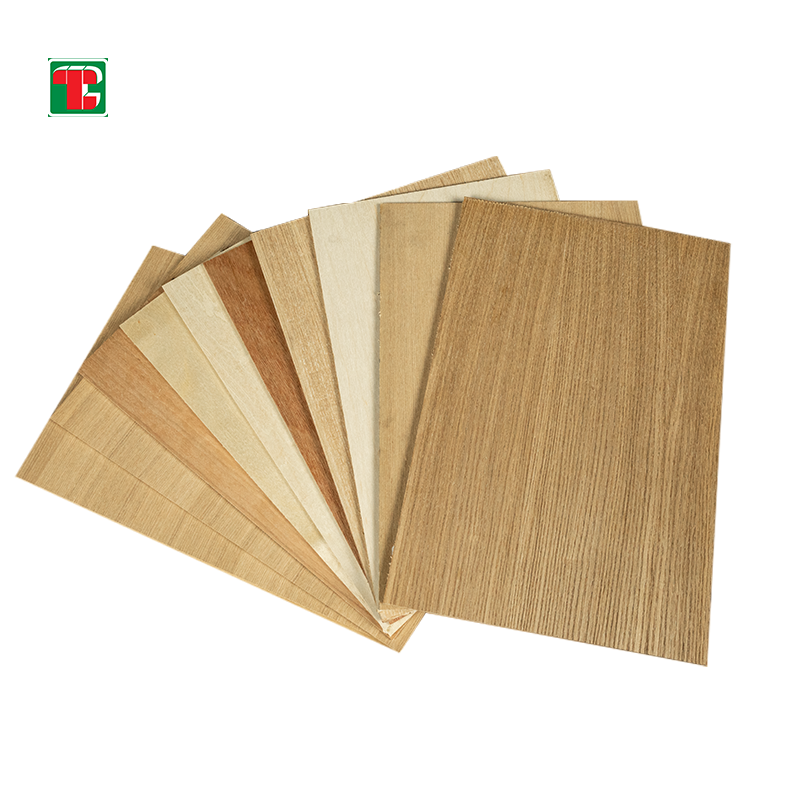
2.Types of Veneer
Wood veneer offers a wide range of options when it comes to types and wood species, allowing for diverse aesthetics and applications in woodworking and design. Here are some common types of wood veneer:
- Birch Veneer:
Birch veneer is known for its pale, even color and fine grain patterns. It's a versatile choice, suitable for a wide range of applications, from furniture to cabinetry. - Oak Veneer:
Oak veneer comes in various subspecies, such as red oak and white oak. It's celebrated for its prominent grain patterns and durability. Oak veneer is often used in traditional and rustic designs. - Maple Veneer:
Maple veneer offers a smooth, pale appearance with subtle grain patterns. It's highly favored for its clean, contemporary look and is commonly used in modern furniture and cabinetry. - Cherry Veneer:
Cherry veneer is prized for its rich, reddish-brown color and distinctive grain. It ages beautifully, darkening over time, and is frequently used in high-end furniture and interior decor. - Walnut Veneer:
Walnut veneer features a dark, chocolate-brown color and striking grain patterns. It's a popular choice for creating luxurious and elegant wooden items. - Mahogany Veneer:
Mahogany veneer is known for its deep, reddish-brown hue and appealing straight grain. It's often used in fine furniture and interior detailing. - Pine Veneer:
Pine veneer boasts a lighter color and a knotty appearance, making it suitable for more rustic and casual designs. It's commonly used in cabinetry and paneling. - Teak Veneer:
Teak veneer is celebrated for its golden to dark brown color and exceptional durability. It's particularly favored for outdoor furniture due to its resistance to moisture and decay. - Rosewood Veneer:
Rosewood veneer showcases a rich, reddish-brown hue and distinctive grain patterns. It's often utilized in high-end furniture and musical instrument production. - Ebony Veneer:
Ebony veneer is prized for its deep black color and smooth texture. It's frequently used as an accent in fine woodworking, creating striking contrasts in design. - Sapele Veneer:
Sapele veneer is known for its reddish-brown color and interlocking grain patterns. It's often used as a cost-effective alternative to mahogany in woodworking projects. - Zebrawood Veneer:
Zebrawood veneer gets its name from its distinctive zebra-like stripes. It's a unique and eye-catching choice for adding a bold statement to furniture and decor.
These are just a few examples of the many wood species available for veneer. The choice of veneer type depends on the desired look, application, and the characteristics of the wood itself. Each type brings its own charm and character to the world of woodworking and design.
<If you need to know more about veneer, click here:News - What Is Veneer? (tlplywood.com)>
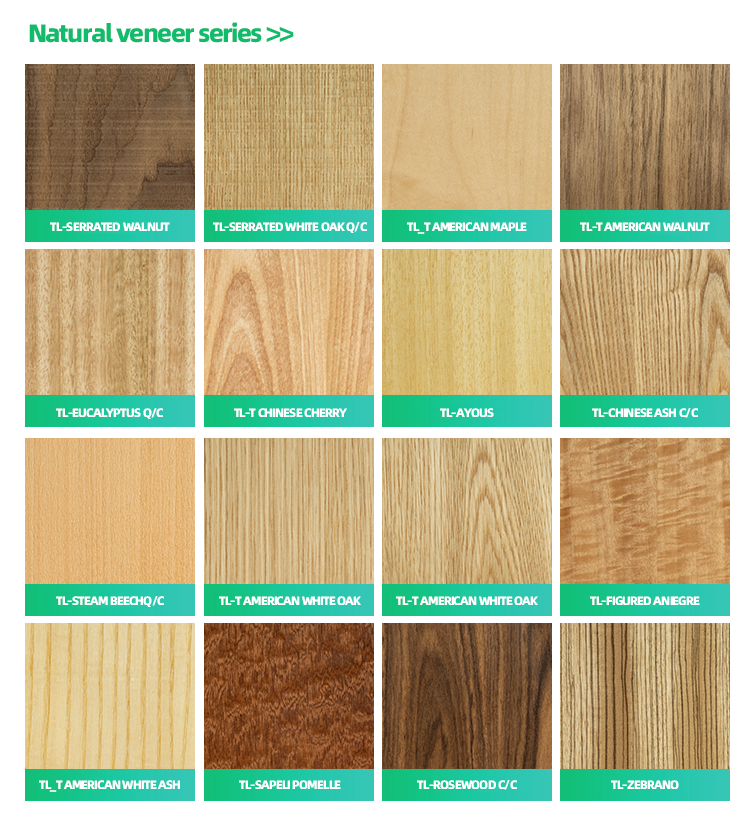
The Contribution of Veneer to Plywood Production
1.Role in Plywood Creation:
Veneer plays a pivotal role in the creation of various types of plywood, each tailored to specific applications and requirements. The process of combining veneer sheets to produce different types of plywood involves careful layering and bonding techniques. Let's delve into how veneer sheets are used to craft different plywood varieties:
- Film-Faced Plywood:
- Film-faced plywood is designed for high durability and resistance to moisture, making it ideal for concrete formwork and exterior applications. To create film-faced plywood, veneer sheets are layered with a phenolic film on the surface, which is then bonded using adhesive. The result is a tough and resilient plywood that can withstand the elements.
- Commercial Plywood:
- Commercial plywood is a versatile option used in various interior and exterior applications. It is typically constructed by layering veneer sheets with a mixture of hardwood and softwood species. The use of different wood species in the layers provides a balance of strength and cost-effectiveness.
- LVL (Laminated Veneer Lumber) Plywood:
- LVL plywood is designed for structural applications, offering exceptional strength and stability. To create LVL plywood, veneer sheets are bonded together with adhesive in a way that maximizes their load-bearing capacity. This results in a plywood that is widely used in construction for beams, headers, and other structural elements.
- Packing Plywood:
- Packing plywood is primarily used for packaging and shipping applications. It is often made from lower-grade veneer sheets to keep costs down. The veneer layers are bonded together, creating a sturdy yet cost-effective material suitable for creating crates and boxes.
- Birch Plywood:
- Birch plywood is valued for its aesthetic appeal and strength. To make birch plywood, high-quality birch veneer sheets are layered and bonded together. The use of premium face veneer and specific core veneer ensures a visually appealing surface, making it popular in fine furniture and cabinetry.
In each of these plywood types, the layering of veneer sheets is a critical step. The veneer layers are bonded using specialized adhesives that may vary depending on the intended use of the plywood. The careful arrangement of these veneer sheets, along with the selection of wood species and quality, ultimately determines the plywood's characteristics, such as strength, appearance, and suitability for specific applications.
Veneer's role in plywood creation is central to achieving a diverse range of plywood products, each tailored to meet the unique demands of construction, design, and manufacturing.
Plywood and Veneer: Comparing Their Key Attributes
1.Diverse Plywood Offerings:
Plywood is available in various types, each tailored to specific needs and challenges. Here are some of the diverse plywood offerings:
- Fire-Retardant Plywood: Designed for enhanced fire resistance, this type of plywood is an excellent choice for applications where fire safety is a top priority. It has low flammability, low fire penetration, and a low burning rate.
- Boiling Waterproof Plywood: This plywood is ideal for areas with high humidity, such as kitchens and bathrooms. It remains undamaged even when exposed to high moisture levels, making it suitable for both interior and exterior use.
- Zero Emission Plywood: With environmental concerns on the rise, zero emission plywood is made with low formaldehyde content, ensuring the purest indoor air quality. It contributes to a healthier living environment, free from suffocation or eye irritation.
- Termite-Resistant Plywood: This type of plywood is manufactured with special termite-resistant resins that protect against termite infestations. It ensures the longevity of wooden items, especially in areas prone to termite problems.
Each type of plywood offers unique advantages and is tailored to specific applications. Understanding these diverse offerings allows professionals and homeowners to choose the right plywood for their particular needs, whether it's for construction, interior design, or environmental consciousness.
Veneers: Thin, Versatile, and Aesthetic
1.Characteristics of Veneers:
Veneers are thin sheets of wood with a unique set of characteristics that make them prized in woodworking and design. Here are the key attributes that define veneers:
- Thin: Veneers are incredibly thin, typically ranging from about 0.25mm to 0.3mm in thickness. This thinness allows for flexibility and a wide range of applications.
- Flexible: Veneers are highly flexible, making them ideal for wrapping around curved surfaces and creating intricate designs. Their pliability enables innovative design possibilities.
- Visually Appealing: Veneers often showcase the natural beauty of wood, with distinct and captivating grain patterns. They can add a touch of elegance and sophistication to furniture and interior decor.
- Obtained by Slicing Wood: Veneers are obtained by slicing wood from blocks or logs using specialized equipment such as a lathe or slicing machine. This process results in thin sheets with unique and interesting grain patterns.
- Art and Decorative Furniture: Veneers are commonly used to create artwork and decorative furniture. They allow craftsmen to incorporate intricate patterns, gradients, and visual textures, enhancing the aesthetic appeal of the final product.
Enhanced Veneers:
To further expand the utility of veneers, they can be treated with chemical solutions to enhance their resistance to various factors:
- Moisture Resistance: Veneers can be treated to become more resistant to moisture, reducing the risk of swelling, warping, or other moisture-related damage. This treatment is valuable in applications where exposure to humidity or occasional spills is a concern.
- Fire Resistance: Chemical treatments can also make veneers more fire-resistant. This enhancement is crucial in environments where fire safety is a priority, providing extra time for safe evacuation in case of a fire hazard.
- Dirt and Dust Resistance: Veneers can be treated to repel dirt and dust, keeping the surface clean and reducing maintenance efforts. This is particularly useful for furniture and surfaces that require minimal upkeep.
These enhancements broaden the range of applications for veneers, making them suitable for various environments and conditions. Veneers treated with these chemical solutions combine their inherent visual appeal with increased functionality, providing a versatile and aesthetic solution for interior and furniture design.
Conclusion:
In conclusion, veneer plywood is an indispensable component in the plywood industry. Understanding its various types, technical specifications, and the role it plays in creating diverse plywood products is essential for anyone involved in the woodworking and construction industries. With companies like Fomex Group leading the way in veneer production, the future of plywood manufacturing looks bright, promising high-quality materials and innovative solutions for the global market.
Post time: Nov-02-2023

